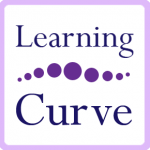 Tonight is not any different. A list of twenty-five patients to be seen. A standing room full of eager volunteer medical students — who just can’t wait to do some doctoring — and a lone attending physician, a family physician who probably enjoys seeing the medical students acting important, walking around with their shiny stethoscopes around their necks, more than anything else.
Tonight is not any different. A list of twenty-five patients to be seen. A standing room full of eager volunteer medical students — who just can’t wait to do some doctoring — and a lone attending physician, a family physician who probably enjoys seeing the medical students acting important, walking around with their shiny stethoscopes around their necks, more than anything else.
On second thought, maybe the doctor is here every week because he wants to get away from his mundane morning office routine of patient check-ups. Whatever the reason is, he has been here for as long as I can remember, when I started volunteering at this shelter two years ago.
The brief instruction was announced. It’s the usual: focused exams, presentation to the attending, well-thought assessments, and reasonable treatment plans. I was handed the first chart: “Here is your first patient. Go to work!”
“A white female in her fifties presented with…” Heck, please skip the formalities! She is here because of pain! They are all here because of pain! Pain in the knee joint. Pain in the lower back. Pain in the head, too. The kind that no medicine can cure.
“A white male presented with shotgun wound…” Yes, the one that he could die from — if that little copper thing changed direction just a few centimeters inward.
“A middle-aged Hispanic male complains of excruciating pain in the lumbar region of T3 through T6…” Of course it is excruciating pain. They never come in until the pain has worsened.
“A young white female presented with multiple complaints: nodule on tongue, pain in right knee, constant nasal discharge … but chief complaint was an ingrown toenail…” An ingrown toenail? Yes, just an ingrown toenail!
Every day, they walk all morning and sleep all night. That’s all these patients can do, anyways, besides working at menial jobs from week to week. They always seem to be in a hurry. Where can you go? You are here for the night. You are for here treatment. Let me find out what is wrong with you. They all seem to have a lot to tell. If you ask the right question and if you let them talk, they will tell you many things, everything.
Did I mention that the white female in her fifties has Crouzon syndrome? Yes, she had over twelve cranial surgeries and several more on her legs. She has three children: two boys who also have Crouzon and a daughter whose whereabouts she no longer knows. She has been bound to a wheelchair for years and weighs only eighty pounds.
And the white male with the shotgun wound. Well, he was agitated, shaken, angry, fidgeting, and asked me if he “could have done anything differently.”
“What do you mean differently?”
“I could have known and fought back, couldn’t I?”
“Let me look at your wound and see if I can do anything for you.”
I did not answer his question. It could not be answered. There was no way it could be answered.
“Your wound is superficial.”
My best diagnosis.
“What does that mean? Will it get infected? Will I die?”
“It’s benign … I mean, it looks real good. It will heal soon. Don’t touch it with dirty hands, okay?”
Final assessment: debridement of pus, antibiotics, and stay away from dangerous neighborhoods!
The Hispanic man had a home and a good job. He was a truck driver. One day, he got beaten up really bad. Got hurt really bad in the shoulder and lower back. Could not work anymore. Now homeless. Been homeless for seven years — from Michigan, to California, now Arizona.
The young white female is a teenager. She no longer can stay in foster homes. She turned eighteen three weeks ago. The system says, “you are an adult now, go somewhere.” So she goes here, the homeless shelter. Still a senior in high school. Not sexually active. Differential of STD for that nodule in her mouth is out of the window! No parents. Don’t know who they are. Supposed to have some relatives somewhere but never spoke with them. Treated her for pain and educated on ingrown toenail. Then sent out on her way. Just like her foster parents did.
Tonight was just another night, not any different — for them.
For me, it is always different.
They told me their stories of resiliency and life. They lend me their body and sickness. They taught me the humanity of medicine.






